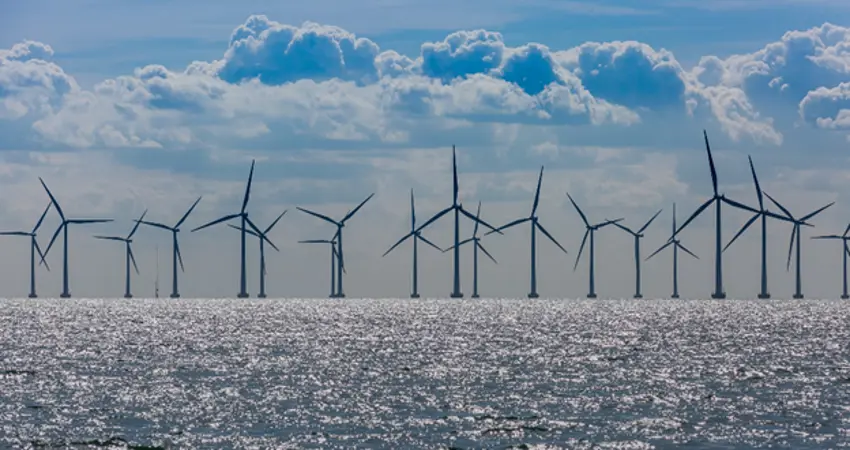14 Dec 2023
Assessing Future Climate Change Impacts on Extreme Low Wind Events for Offshore Wind Turbines

Dogger bank, the world’s largest offshore wind farm. Masha Basova/Shutterstock.com
A new paper entitled “Assessing long-term future climate change impacts on extreme low wind events for offshore wind turbines in the UK exclusive economic zone” has been authored by Oxford e-Research Centre researchers Sara Abdelaziz, Sarah Sparrow, David Wallom, alongside Centre alumnus Weiqi Hua.
Motivated by the UK government's efforts for a more sustainable energy model to meet its net-zero target, the paper investigates low wind speed events (LWE) and their impact on wind turbine energy production. There are predictions that increases in global temperatures will lead to a reduction in global near-surface wind speeds in the coming years.
The paper brings several contributions to the growing literature on climate change's impact on siting offshore wind farms. The location targeted in this study is the UK exclusive economic zone (UK EEZ); the UK EEZ contains a larger installed new capacity of offshore wind farms than any other European EEZ zone.
The work investigates future low wind speed events in the UK EEZ using the UK climate projections (UKCP18) in a cutting-edge 2.2km horizontal resolution dataset. Multiple techniques have been used to investigate future low wind events, such as the duration of low wind events under cut-in wind speed thresholds and the return time of multiple cut-in thresholds using multiple time window datasets.
Paper co-author Sara Abdelaziz;
“Extreme low wind speeds have noticeably affected wind generation and are expected to occur more often due to climate change. We provided important insight for future offshore wind farm installations and expansion policies by using multiple analyses covering various still weather aspects, such as intensity and durations of low wind speed events.
This approach is beneficial to gain more understanding about possible changes and advise stakeholders for the currently installed offshore wind turbines about possible future wind generation changes compared to what they have already experienced in the past.”
The research provides insight into the seasonal changes for the future durations of low wind speed events and compares the results for four main regions in the UK EEZ: East, South, West, and North. Major findings from the studies include:
- The seasonal variations in LWE durations less than 4 m/s demonstrate that summer and autumn have an increase in most of the LWE durations occurrence in the 2061-2080 period in all regions compared to the 1981-2000 period.
- The results of our work emphasize the importance of considering future planning of wind turbines with cut-in wind speeds < 4 m/s in locations near the UK coastline.
- Using a five day running mean wind speed, the return time for 6 m/s cut-in wind speed shows that offshore wind turbines will be vulnerable to frequent extreme LWE in most areas, with most sites experiencing a return period of up to 20 years.
- According to the region median return year and the Risk Ratio analysis, it is suggested that the South region exhibits a diminished risk of experiencing more frequent instances of wind speed surpassing the cut-in threshold, specifically when utilizing cut-in thresholds of 5 m/s and 6 m/s, during the period spanning 2021-2040, as compared to the 1981-2000 period.
This analysis is deemed indispensable as it allows for a comprehensive perspective for regional comparisons and thus informs recommendations for locations with the least risk of low wind speed events. This is crucial as the analysis can provide a long-run economic impact forecast, so it is considered when policymakers and wind generation companies decide to expand and install OWE farms.
Find out more
- Link to the paper “Assessing long-term future climate change impacts on extreme low wind events for offshore wind turbines in the UK exclusive economic zone”
- The 2023 United Nations Climate Change Conference has been taking place in Dubai, United Arab Emirates







